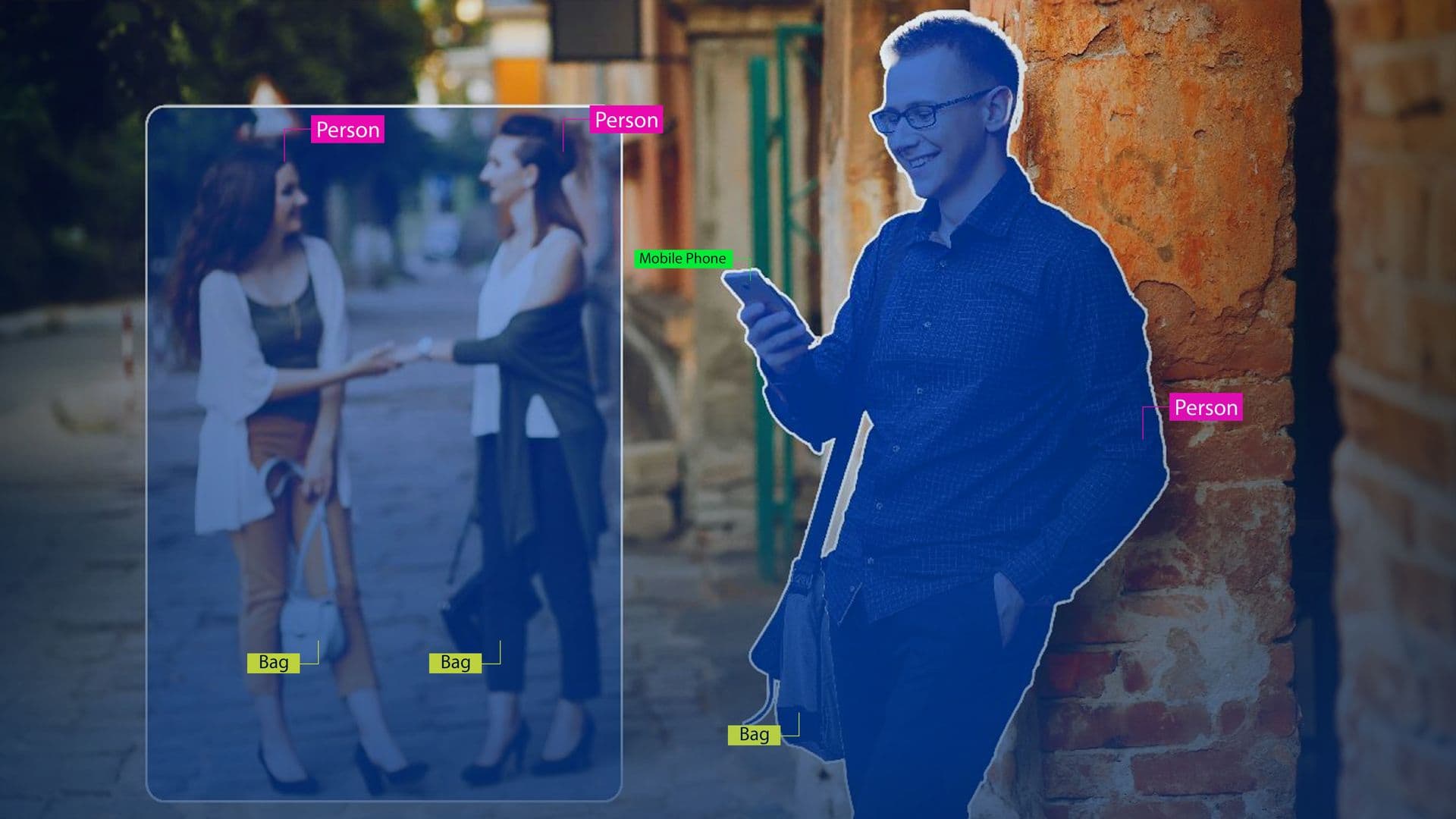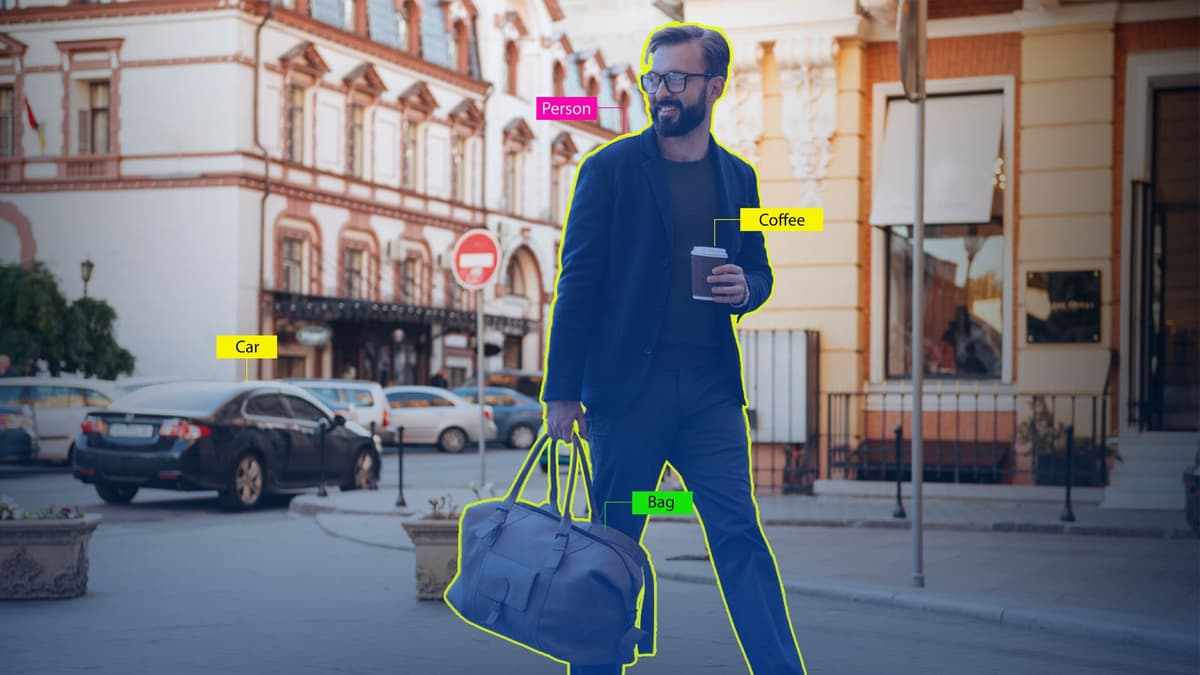How Labelo Can Help With Both Bounding Box & Semantic Segmentation in 2025

Data annotation is the backbone of many machine learning and computer vision projects, as it enables models to understand, process, and make accurate predictions from raw data. Two widely used methods in image annotation for object detection are Bounding Boxes and Semantic Segmentation. Both play essential roles in training computer vision models, but they differ significantly in terms of functionality, accuracy, and the type of information they provide. In this blog, we will delve into these two methods, their advantages, limitations, and how to choose the best one for a given task.
What is Bounding Box Annotation?
Bounding boxes are one of the most basic and commonly used annotation types for image and object detection tasks. A bounding box is essentially a rectangle or square that surrounds the object in an image, providing the coordinates for the top-left and bottom-right corners. This data allows models to detect where an object is located within an image.
Key Use Cases for Bounding Boxes
Bounding boxes are particularly useful in scenarios where a rough localization of objects is sufficient. They are extensively used in:
- Object Detection: Identifying the location and class of an object in an image. For example, a bounding box could indicate the presence of a dog in a specific area of an image without outlining its exact shape.
- Tracking: In video analytics, bounding boxes are used to track objects frame-by-frame.
- Autonomous Vehicles: Bounding boxes are used to quickly identify pedestrians, vehicles, and other obstacles, which is crucial for navigation.
Advantages of Bounding Boxes
- Efficiency: Bounding boxes are relatively quick to annotate, making them efficient for labeling large datasets.
- Speed: Models trained on bounding boxes are typically faster since they do not require detailed object outlines, making them suitable for real-time applications.
- Lower Complexity: With fewer annotation requirements, bounding boxes are easier for annotators to create, reducing errors and making the process more straightforward.
Limitations of Bounding Boxes
- Lack of Precision: Bounding boxes are limited to rectangular shapes and cannot accurately outline irregularly shaped objects, which leads to the inclusion of irrelevant background pixels.
- Less Detail for Object Shape: Since bounding boxes do not capture the exact shape of objects, they are not ideal for fine-grained applications, such as medical imaging or any task requiring detailed object representation.
What is Semantic Segmentation?
Semantic segmentation, on the other hand, is a more advanced annotation technique that involves labeling each pixel in an image according to its category. Instead of drawing a rectangle around the object, annotators draw precise outlines to capture the shape and size of each object. This level of detail allows models to learn not only the location but also the shape and boundaries of each object.
Key Use Cases for Semantic Segmentation
Semantic segmentation is best suited for tasks that require detailed understanding and precise location of objects within an image, such as:
- Medical Imaging: For diagnosing conditions, pixel-level segmentation is critical, such as in identifying cancerous cells or marking regions of interest in MRI scans.
- Autonomous Vehicles: Semantic segmentation helps in accurately identifying the boundaries of pedestrians, vehicles, roads, and traffic signs, making it safer for autonomous navigation.
- Augmented Reality (AR): Precise object boundaries are essential for integrating virtual elements with real-world environments in a realistic manner.
Advantages of Semantic Segmentation
- High Precision: By providing pixel-level information, semantic segmentation captures the exact shape and boundaries of objects, which improves model accuracy.
- Detailed Information: Semantic segmentation allows for a more nuanced understanding of an image, making it possible for the model to differentiate between overlapping objects or fine-grained details.
- Enhanced Model Training: Models trained with segmentation data can achieve higher performance in complex tasks, such as differentiating between tightly grouped objects or processing images with cluttered backgrounds.
Limitations of Semantic Segmentation
- Time-Consuming: The annotation process is significantly more labor-intensive, as it requires outlining each object down to the pixel level.
- Increased Cost: Since it takes more time to annotate, semantic segmentation can be costly, especially for large datasets.
- Computational Demand: Models trained on segmentation data require more computing power due to the increased data granularity, which can affect training times and performance.
Comparing Bounding Boxes and Semantic Segmentation
| Feature | Bounding Box | Semantic Segmentation |
| Precision | Low | High |
| Annotation Speed | Fast | Slower |
| Annotation Cost | Lower | Higher |
| Computational Demand | Lower | Higher |
Choosing the Right Annotation Method for Your Project
Choosing between bounding boxes and semantic segmentation depends largely on the requirements of your project:
- Project Goals: If your objective is to locate objects in images for real-time applications, such as tracking people or vehicles, bounding boxes may be sufficient. However, if your project demands high precision, as in medical imaging, semantic segmentation is ideal.
- Dataset Size and Budget: Annotating large datasets with semantic segmentation can be resource-intensive. Bounding boxes are quicker and less costly, so they are often preferred for large-scale datasets with simpler requirements.
- Model Complexity: If you aim for a high-precision model and have the resources to manage large, complex datasets, then semantic segmentation will help you achieve the best results. If simplicity and speed are more critical, bounding boxes provide a quicker solution with reasonable accuracy.
How Labelo Can Help with Both Techniques
Tools like Labelo offer a comprehensive annotation platform that supports both bounding boxes and semantic segmentation. Labelo’s intuitive interface and quality control features streamline the annotation process, whether you need quick bounding box annotations or detailed segmentation work. With Labelo, you can switch between annotation techniques based on project needs, optimize workflow, and ensure consistent quality across your labeled data.
Conclusion
Both bounding boxes and semantic segmentation are invaluable tools in the data annotation process, each serving unique purposes. While bounding boxes provide an efficient way to capture object locations, semantic segmentation offers pixel-level precision for complex tasks. With Labelo’s support, you can seamlessly incorporate annotation techniques into your projects, optimizing your workflow for speed, accuracy, or a balance of both. Labelo keyboard shortcuts are designed to enhance productivity and streamline navigation within the platform. These shortcuts provide quick access to essential features, allowing users to perform tasks efficiently without relying heavily on the mouse.
Labelo Editorial Team
Jan 27, 2025
Related Post

What is Data Annotation & Its Types [2025]

How to Assign Annotators & Reviewers to a Task in Labelo

What is Data Annotation? A Basic to Advanced Guide for 2025

Top 4 Annotating Options to Improve the Annotation Process in Labelo [2025]
Related Posts

The Future of Data Annotation: Trends and Innovation
Data annotation plays a crucial role in training AI and machine learni...
How to Assign Annotators & Reviewers to a Task in Labelo
In the context of data labeling and annotation projects, effective tas...
What is Data Annotation & Its Types [2025]
Data annotation is the process of tagging, labeling or categorizing da...
How to Improve Model Accuracy Through Quality Data Annotation in Labelo
In the rapidly evolving field of artificial intelligence and machine l...